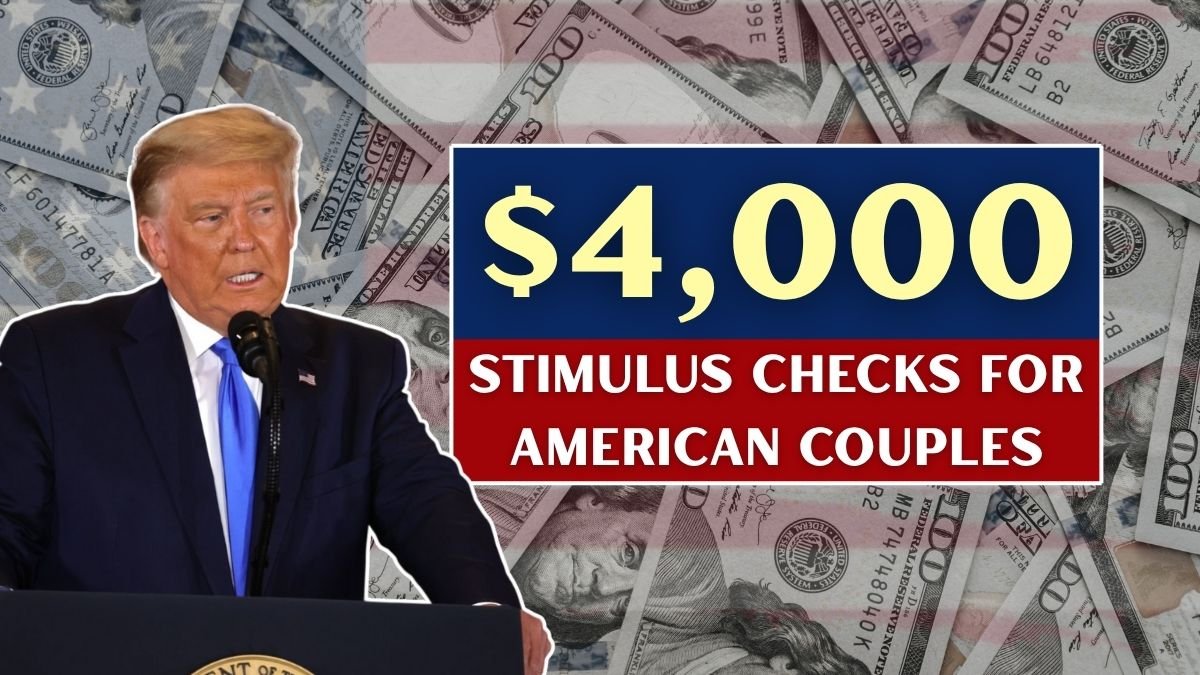$4,000 Stimulus Checks: In the US, rising inflation, skyrocketing rents, high healthcare costs, and the burden of everyday expenses have made life challenging for ordinary citizens. In this context, President Donald Trump’s recent new economic proposal has gained traction. This proposal calls for direct cash payments to eligible taxpayers, raising expectations and intensifying debate across the country. As in the past, when discussions about $5,000 DOGE dividends excited citizens, this time too, people are hoping for relief. The only difference is that this proposal is based on tariff revenue, a real and existing source of revenue.
The Basic Idea of Returning Tariff Revenue to the Public
The foundation of this proposal is based on tariff revenue generated by US trade policies. Over the past few years, tariffs imposed on international trade have generated significant revenue for the government. Trump argues that a portion of this revenue should be returned to the public, especially at a time when many families are struggling with rising expenses. So far, tariffs have generated over $120 billion in revenue, and it is estimated that this amount could reach $216 billion by fiscal year 2026. While this amount may seem large, when compared with the potential expenditures of the proposed stimulus plan, it becomes clear that it is not enough to cover the entire payment. Nevertheless, supporters believe that some adjustments and the use of additional fiscal tools could make this plan feasible.
$2,000 Relief for Individuals and $4,000 for Couples

Treasury Secretary Scott Bessant has indicated that the individual income threshold for eligibility under consideration could be set at $100,000. If this threshold is implemented, individuals falling within this threshold could receive a payment of at least $2,000. Married couples filing jointly could receive this amount, which could increase to $4,000. This amount could provide significant relief to families whose incomes are stable but whose expenses are constantly rising. Economic analysts believe that direct cash payments not only provide immediate relief to families but can also improve the overall economy by increasing consumer spending.
Will children and dependents be included?
A major question is whether this new scheme will include children or other dependents. Previous stimulus plans provided parents with additional funds per dependent, providing significant financial support to millions of families. Based on this, many are hoping that additional funds may be provided for dependents this time as well. However, no clear announcement has been made on this matter yet. If dependents are included, the total number of eligible individuals will increase, significantly increasing the cost of the scheme. This makes this initiative more complex in terms of economic feasibility.
Current Status of the Proposal: Currently in the Discussion Stage
It is important to note that this proposal currently exists only as a preliminary concept. It has not been formally introduced in Congress, nor has a draft bill been prepared. Implementing any major economic relief proposal in the United States requires a lengthy legislative process, involving multiple rounds of discussions, amendments, and votes. History shows that initial proposals often change significantly by the time they reach the final stage. Recently, Senator Josh Hawley proposed payments of only $600, while now a $2,000 amount is being discussed. This clearly demonstrates that such proposals continue to evolve according to the changing economic landscape and political consensus.
Financial Feasibility: A Large Gap Between Costs and Revenues
According to an analysis by the Tax Foundation, approximately 150 million adults could be covered by this proposal. If $2,000 were given to all eligible individuals, the total estimated cost could reach approximately $300 billion. This amount is extremely large and significantly exceeds the estimated revenue generated from tariffs. This is the economic challenge that makes this plan practically difficult. If dependents are included, this cost will increase further, meaning the government will have to find additional resources. Experts believe that without an alternative revenue source, the plan could prove incomplete or even impossible.
Legal Challenges: Questions Over the President’s Power to Impose Tariffs
This proposal faces not only economic challenges but also legal hurdles. The court is pending the question of how much freedom the president has to impose tariffs on trade and whether congressional approval is necessary. The Supreme Court is considering this matter, and its decision could directly impact the financial structure of this plan. If the court limits the president’s ability to impose tariffs, securing the necessary funds for this proposal will become even more difficult. Consequently, the plan’s future also depends on legal approval.
The Way Forward: Will this plan become a reality?
Given all these economic, legal, and political challenges, it is difficult to say whether this proposal will become a reality anytime soon. Without bipartisan consensus in Congress, this plan cannot move forward, and given the political climate in the United States, this process is often slow and contentious. Nevertheless, given the growing financial pressures and public expectations in the country, discussions on stimulus payments are likely to continue. If both parties agree on a common solution, millions of Americans could receive relief of $2,000 per individual and $4,000 per couple. Until formal action is taken, this proposal will remain a topic of discussion and speculation, but its impact is clear enough to place it squarely at the center of the nation’s economic debate.
FAQs
Q. How much money could eligible individuals receive?
A. Eligible individuals may receive at least $2,000 under the proposed stimulus plan.
Q. How much would married couples get?
A. Married couples who meet the income requirements could receive up to $4,000.
Q. What is the income limit for eligibility?
A. The proposed income threshold is $100,000 for individuals. Joint filers would need to fall below their combined limit.
Q. Are dependents included in the proposal?
A. It is still unclear. Previous stimulus rounds included dependents, but no confirmed details are available for this plan.
Q. Has the proposal been approved by Congress?
A. No. The plan is still in the conceptual stage and no formal bill has been introduced yet.



